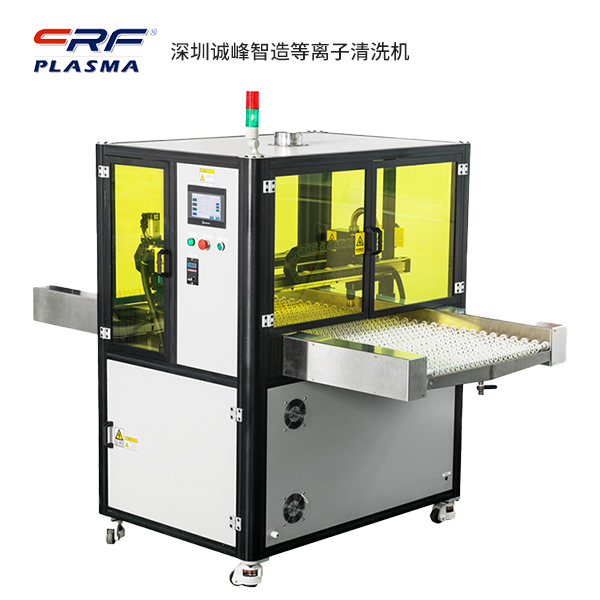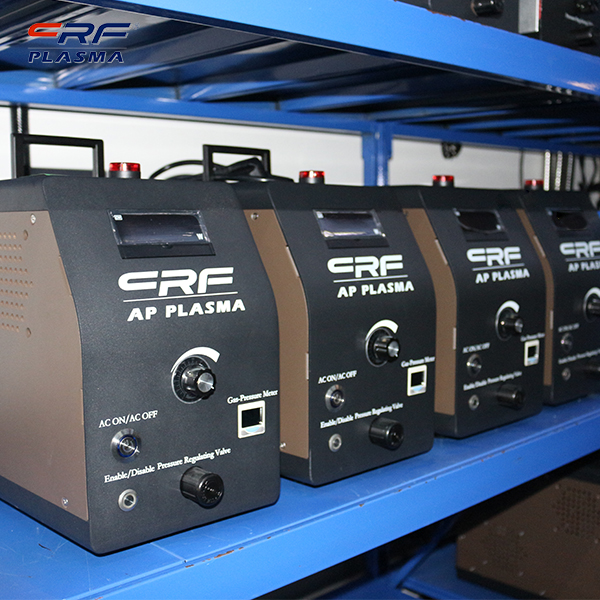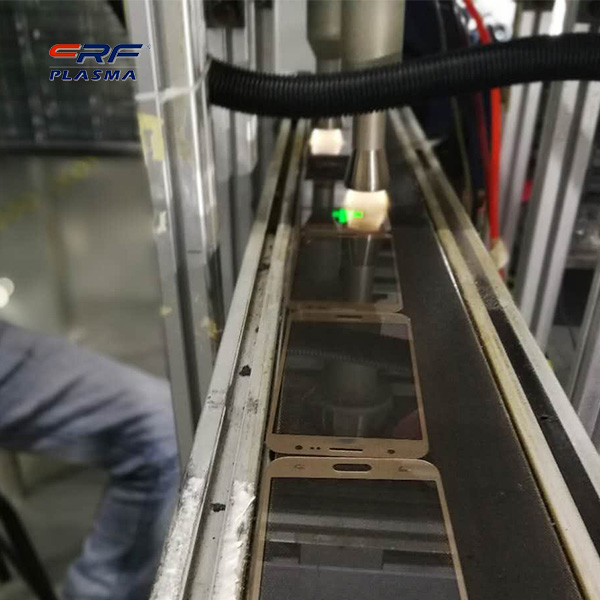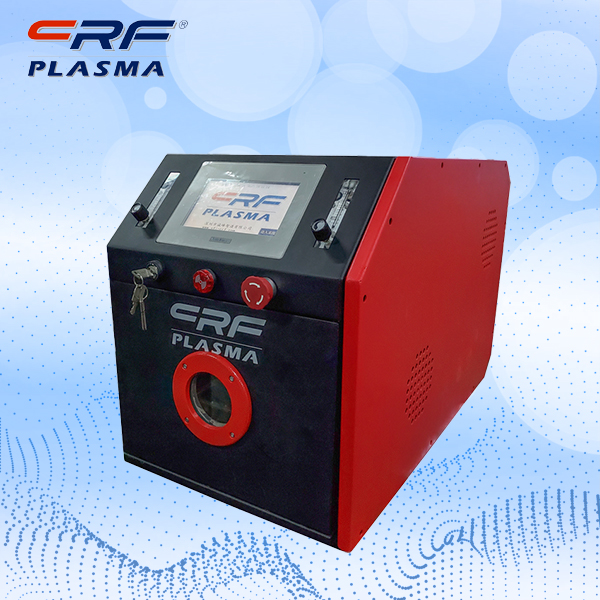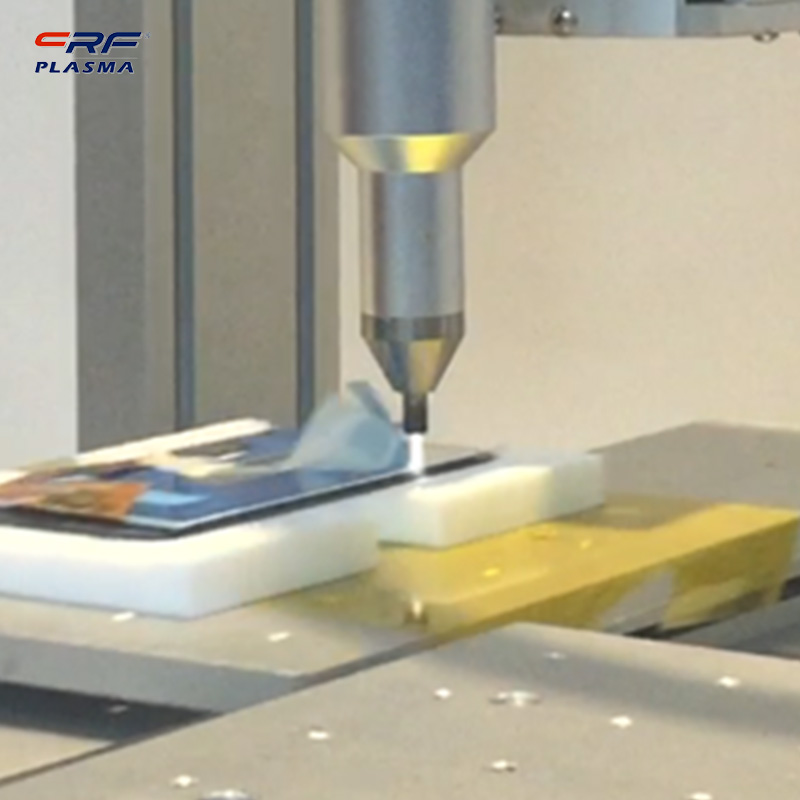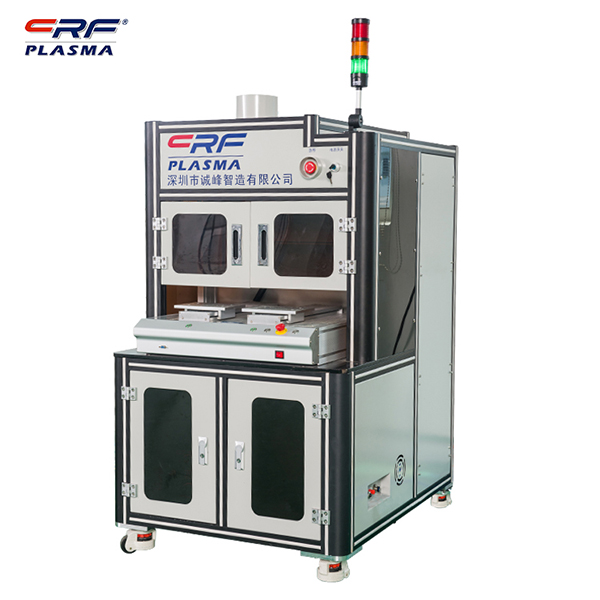
Welcome to Shenzhen Sing Fung Intelligent Manufacturing Co., Ltd.
E-mail:shaobo@sfi-crf.com
Low-temperature plasma surface modification of metal biomaterials by graft polymerization of metal-polymers
- Categories:Technical Support
- Author:Plasma cleaning machine-CRF plasma plasma equipment-plasma surface treatment machine manufacturer-chengfeng intelligent manufacturing
- Origin:
- Time of issue:2022-04-04
- Views:
(Summary description)Low-temperature plasma surface modification of metal biomaterials by graft polymerization of metal-polymers: The application of metal biomaterials in low temperature plasma surface modification mainly includes three aspects: improving biocompatibility, immobilizing bioactive macromolecules, and improving the physiological corrosion resistance of metal materials. Grafting is a commonly used plasma surface modification method. The grafting of appropriate monomers or polymers can improve the hydrophilicity, adhesion, corrosion resistance, electrical conductivity and biocompatibility of metal polymers. When a metal material is implanted into a living body, it must meet the requirements of biocompatibility. Biological compatibility is the degree to which a substance is compatible with blood and tissue. Surface modification of metal biomaterials with functional groups such as grafting, polymerization, and hydrophilicity is a surface modification method of metal biomaterials that is currently studied. It is mainly used to improve the biocompatibility of materials and induce the growth of living cells. biological activity of the material. Plasma surface modification of PEG was carried out by AgnesR, Denes, etc., so that PEG was grafted on the surface of stainless steel. The XPS results showed that the introduction of a large number of low-temperature plasma surface modification -CH2-CH2-O groups on the surface of stainless steel can significantly Improve the hydrophilicity of the material surface. Reduce roughness and greatly reduce the adsorption of bacteria on the surface of the material. Coronary angioplasty (PTCA) is often used in clinical treatment of coronary vascular disease. That is to say, a metal dilator is used to support the blood vessel inside the blood vessel, but the polymer metallized Stern fixation membrane used still has a high coagulation property, so the blood vessel will become more narrow. Lahann et al. used a CVD method to perform a chlorination reaction on the polymer metal surface, followed by SO2 microwave plasma treatment. The study found that after SO2 plasma treatment, the contact angle was reduced to 15 degrees, and the hydrophilicity of the material surface was improved. The grafting of organic organic grafts on the metal plasma surface or the metallization of the polymer surface involves the adhesion of the polymer to the metal. Zhang et al. investigated the adhesion of PTFE (PTFE) to metallic aluminum. First, PTFE was pretreated with argon plasma (frequency 40kHz, power 35W, argon pressure 80Pa). Then use acrylate glycerol, GMA, heat to evaporate aluminum, make it and GMA graft copolymerization reaction, generate hydrogen oxide and peroxide, and then use heat to evaporate aluminum, use GMA, the graft copolymer of PTFE and A's The adhesion is 22 times that of PTFE and Al and 3 times that of PTFE and Al pretreated with Ar plasma only. Calcium and phosphorus are the basic components of bone tissue. Depositing a layer of calcium phosphate or hydroxyapatite (HA) on the surface of metal implants can effectively improve its compatibility with bone tissue and enhance osteogenic induction. . The modification can be performed by plasma spraying (PSC). Polypropylene was treated by three methods (mechanical roughening method, low temperature plasma surface modification with oxygen, nitrogen and argon gas, and intermediate layer method), and the adhesion characteristics of metal polymer on the polymer were studied, The results show that the mechanical roughening method can effectively improve the adhesion between polypropylene and copper, but the effect of plasma treatment is better, especially Ar plasma, in the process of polypropylene polymerization, the intermediate layer contains C- 0 key, strong adhesion. Arc discharge (>10000°C) is generated through the high potential difference between the electrodes, ionizing the gas around the electrodes into plasma, and then hitting the modified powdery substance suspended on the surface at high speed, causing it to settle on the metal surface. Plasma spraying is a widely used deposition method. The coating can form a high bonding force between the substrate and the surface modification layer to obtain a fully covered coating (40~54m). Coatings formed by this process can rapidly nucleate and grow in body fluids. However, due to high temperature treatment, there are disadvantages such as uneven density, inconsistent structure, and large variation in bond strength, and hydroxyapatite is easily decomposed during the spraying process, and is prone to desolubilization under body fluid conditions. After spraying the HA coating, heat treatment or steam bath is also required to improve the composition and structure of the coating. If the vapor pressure is 0.15 MPa and the temperature is 125 ℃, and the steam bath is treated for 6 h, most of the amorphous HA phase will be transformed into crystals, and other decomposition products generated during spraying will
Low-temperature plasma surface modification of metal biomaterials by graft polymerization of metal-polymers
(Summary description)Low-temperature plasma surface modification of metal biomaterials by graft polymerization of metal-polymers:
The application of metal biomaterials in low temperature plasma surface modification mainly includes three aspects: improving biocompatibility, immobilizing bioactive macromolecules, and improving the physiological corrosion resistance of metal materials. Grafting is a commonly used plasma surface modification method. The grafting of appropriate monomers or polymers can improve the hydrophilicity, adhesion, corrosion resistance, electrical conductivity and biocompatibility of metal polymers.
When a metal material is implanted into a living body, it must meet the requirements of biocompatibility. Biological compatibility is the degree to which a substance is compatible with blood and tissue. Surface modification of metal biomaterials with functional groups such as grafting, polymerization, and hydrophilicity is a surface modification method of metal biomaterials that is currently studied. It is mainly used to improve the biocompatibility of materials and induce the growth of living cells. biological activity of the material. Plasma surface modification of PEG was carried out by AgnesR, Denes, etc., so that PEG was grafted on the surface of stainless steel. The XPS results showed that the introduction of a large number of low-temperature plasma surface modification -CH2-CH2-O groups on the surface of stainless steel can significantly Improve the hydrophilicity of the material surface. Reduce roughness and greatly reduce the adsorption of bacteria on the surface of the material. Coronary angioplasty (PTCA) is often used in clinical treatment of coronary vascular disease. That is to say, a metal dilator is used to support the blood vessel inside the blood vessel, but the polymer metallized Stern fixation membrane used still has a high coagulation property, so the blood vessel will become more narrow. Lahann et al. used a CVD method to perform a chlorination reaction on the polymer metal surface, followed by SO2 microwave plasma treatment. The study found that after SO2 plasma treatment, the contact angle was reduced to 15 degrees, and the hydrophilicity of the material surface was improved. The grafting of organic organic grafts on the metal plasma surface or the metallization of the polymer surface involves the adhesion of the polymer to the metal. Zhang et al. investigated the adhesion of PTFE (PTFE) to metallic aluminum. First, PTFE was pretreated with argon plasma (frequency 40kHz, power 35W, argon pressure 80Pa). Then use acrylate glycerol, GMA, heat to evaporate aluminum, make it and GMA graft copolymerization reaction, generate hydrogen oxide and peroxide, and then use heat to evaporate aluminum, use GMA, the graft copolymer of PTFE and A's The adhesion is 22 times that of PTFE and Al and 3 times that of PTFE and Al pretreated with Ar plasma only.
Calcium and phosphorus are the basic components of bone tissue. Depositing a layer of calcium phosphate or hydroxyapatite (HA) on the surface of metal implants can effectively improve its compatibility with bone tissue and enhance osteogenic induction. . The modification can be performed by plasma spraying (PSC). Polypropylene was treated by three methods (mechanical roughening method, low temperature plasma surface modification with oxygen, nitrogen and argon gas, and intermediate layer method), and the adhesion characteristics of metal polymer on the polymer were studied, The results show that the mechanical roughening method can effectively improve the adhesion between polypropylene and copper, but the effect of plasma treatment is better, especially Ar plasma, in the process of polypropylene polymerization, the intermediate layer contains C- 0 key, strong adhesion.
Arc discharge (>10000°C) is generated through the high potential difference between the electrodes, ionizing the gas around the electrodes into plasma, and then hitting the modified powdery substance suspended on the surface at high speed, causing it to settle on the metal surface. Plasma spraying is a widely used deposition method. The coating can form a high bonding force between the substrate and the surface modification layer to obtain a fully covered coating (40~54m). Coatings formed by this process can rapidly nucleate and grow in body fluids. However, due to high temperature treatment, there are disadvantages such as uneven density, inconsistent structure, and large variation in bond strength, and hydroxyapatite is easily decomposed during the spraying process, and is prone to desolubilization under body fluid conditions. After spraying the HA coating, heat treatment or steam bath is also required to improve the composition and structure of the coating. If the vapor pressure is 0.15 MPa and the temperature is 125 ℃, and the steam bath is treated for 6 h, most of the amorphous HA phase will be transformed into crystals, and other decomposition products generated during spraying will
- Categories:Technical Support
- Author:Plasma cleaning machine-CRF plasma plasma equipment-plasma surface treatment machine manufacturer-chengfeng intelligent manufacturing
- Origin:
- Time of issue:2022-04-04 17:40
- Views:
Low-temperature plasma surface modification of metal biomaterials by graft polymerization of metal-polymers:
The application of metal biomaterials in low temperature plasma surface modification mainly includes three aspects: improving biocompatibility, immobilizing bioactive macromolecules, and improving the physiological corrosion resistance of metal materials. Grafting is a commonly used plasma surface modification method. The grafting of appropriate monomers or polymers can improve the hydrophilicity, adhesion, corrosion resistance, electrical conductivity and biocompatibility of metal polymers.
When a metal material is implanted into a living body, it must meet the requirements of biocompatibility. Biological compatibility is the degree to which a substance is compatible with blood and tissue. Surface modification of metal biomaterials with functional groups such as grafting, polymerization, and hydrophilicity is a surface modification method of metal biomaterials that is currently studied. It is mainly used to improve the biocompatibility of materials and induce the growth of living cells. biological activity of the material. Plasma surface modification of PEG was carried out by AgnesR, Denes, etc., so that PEG was grafted on the surface of stainless steel. The XPS results showed that the introduction of a large number of low-temperature plasma surface modification -CH2-CH2-O groups on the surface of stainless steel can significantly Improve the hydrophilicity of the material surface. Reduce roughness and greatly reduce the adsorption of bacteria on the surface of the material. Coronary angioplasty (PTCA) is often used in clinical treatment of coronary vascular disease. That is to say, a metal dilator is used to support the blood vessel inside the blood vessel, but the polymer metallized Stern fixation membrane used still has a high coagulation property, so the blood vessel will become more narrow. Lahann et al. used a CVD method to perform a chlorination reaction on the polymer metal surface, followed by SO2 microwave plasma treatment. The study found that after SO2 plasma treatment, the contact angle was reduced to 15 degrees, and the hydrophilicity of the material surface was improved. The grafting of organic organic grafts on the metal plasma surface or the metallization of the polymer surface involves the adhesion of the polymer to the metal. Zhang et al. investigated the adhesion of PTFE (PTFE) to metallic aluminum. First, PTFE was pretreated with argon plasma (frequency 40kHz, power 35W, argon pressure 80Pa). Then use acrylate glycerol, GMA, heat to evaporate aluminum, make it and GMA graft copolymerization reaction, generate hydrogen oxide and peroxide, and then use heat to evaporate aluminum, use GMA, the graft copolymer of PTFE and A's The adhesion is 22 times that of PTFE and Al and 3 times that of PTFE and Al pretreated with Ar plasma only.
Calcium and phosphorus are the basic components of bone tissue. Depositing a layer of calcium phosphate or hydroxyapatite (HA) on the surface of metal implants can effectively improve its compatibility with bone tissue and enhance osteogenic induction. . The modification can be performed by plasma spraying (PSC). Polypropylene was treated by three methods (mechanical roughening method, low temperature plasma surface modification with oxygen, nitrogen and argon gas, and intermediate layer method), and the adhesion characteristics of metal polymer on the polymer were studied, The results show that the mechanical roughening method can effectively improve the adhesion between polypropylene and copper, but the effect of plasma treatment is better, especially Ar plasma, in the process of polypropylene polymerization, the intermediate layer contains C- 0 key, strong adhesion.
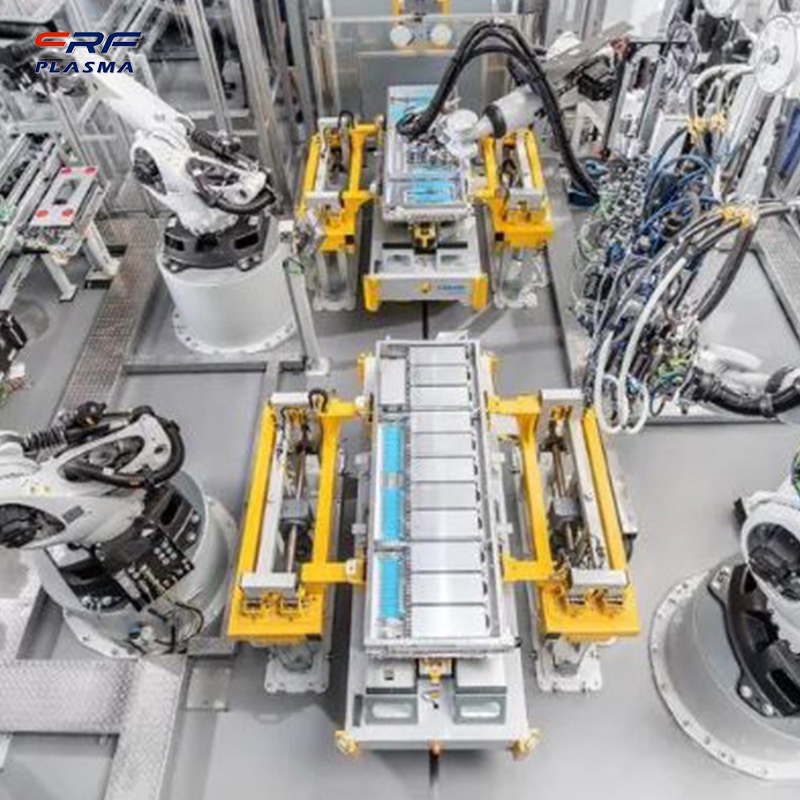 Arc discharge (>10000°C) is generated through the high potential difference between the electrodes, ionizing the gas around the electrodes into plasma, and then hitting the modified powdery substance suspended on the surface at high speed, causing it to settle on the metal surface. Plasma spraying is a widely used deposition method. The coating can form a high bonding force between the substrate and the surface modification layer to obtain a fully covered coating (40~54m). Coatings formed by this process can rapidly nucleate and grow in body fluids. However, due to high temperature treatment, there are disadvantages such as uneven density, inconsistent structure, and large variation in bond strength, and hydroxyapatite is easily decomposed during the spraying process, and is prone to desolubilization under body fluid conditions. After spraying the HA coating, heat treatment or steam bath is also required to improve the composition and structure of the coating. If the vapor pressure is 0.15 MPa and the temperature is 125 ℃, and the steam bath is treated for 6 h, most of the amorphous HA phase will be transformed into crystals, and other decomposition products generated during spraying will be reduced to crystalline HA. The stability of the coating can be improved. The stability of a crystalline HA coating is more stable than that of an amorphous HA coating, but its surface density is more stable than that of an amorphous HA coating. has seen an increase. In addition, its osteogenic inductivity was also reduced. Therefore, in the actual preparation process, appropriate process conditions should be selected according to the specific use requirements of the material. At present, many domestic units are using plasma surface modification technology to actively conduct low-temperature plasma surface modification and surface film synthesis research on biomedical materials to solve the problems of anticoagulation, biocompatibility, surface Key technical issues such as hydrophilicity, anti-calcification, cell growth and inhibition of adsorption. Application of plasma spray technology in Shanghai Institute of Ceramics, Chinese Academy of Sciences. Important progress has been made in the research on the surface growth of ZrO2 and other coating materials to improve artificial bone.
Arc discharge (>10000°C) is generated through the high potential difference between the electrodes, ionizing the gas around the electrodes into plasma, and then hitting the modified powdery substance suspended on the surface at high speed, causing it to settle on the metal surface. Plasma spraying is a widely used deposition method. The coating can form a high bonding force between the substrate and the surface modification layer to obtain a fully covered coating (40~54m). Coatings formed by this process can rapidly nucleate and grow in body fluids. However, due to high temperature treatment, there are disadvantages such as uneven density, inconsistent structure, and large variation in bond strength, and hydroxyapatite is easily decomposed during the spraying process, and is prone to desolubilization under body fluid conditions. After spraying the HA coating, heat treatment or steam bath is also required to improve the composition and structure of the coating. If the vapor pressure is 0.15 MPa and the temperature is 125 ℃, and the steam bath is treated for 6 h, most of the amorphous HA phase will be transformed into crystals, and other decomposition products generated during spraying will be reduced to crystalline HA. The stability of the coating can be improved. The stability of a crystalline HA coating is more stable than that of an amorphous HA coating, but its surface density is more stable than that of an amorphous HA coating. has seen an increase. In addition, its osteogenic inductivity was also reduced. Therefore, in the actual preparation process, appropriate process conditions should be selected according to the specific use requirements of the material. At present, many domestic units are using plasma surface modification technology to actively conduct low-temperature plasma surface modification and surface film synthesis research on biomedical materials to solve the problems of anticoagulation, biocompatibility, surface Key technical issues such as hydrophilicity, anti-calcification, cell growth and inhibition of adsorption. Application of plasma spray technology in Shanghai Institute of Ceramics, Chinese Academy of Sciences. Important progress has been made in the research on the surface growth of ZrO2 and other coating materials to improve artificial bone.
Scan the QR code to read on your phone

TEL:0755-3367 3020 / 0755-3367 3019

E-mail:sales-sfi@sfi-crf.com

ADD:Mabao Industrial Zone, Huangpu, Baoan District, Shenzhen




